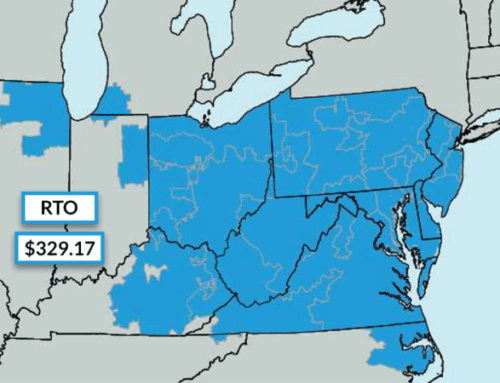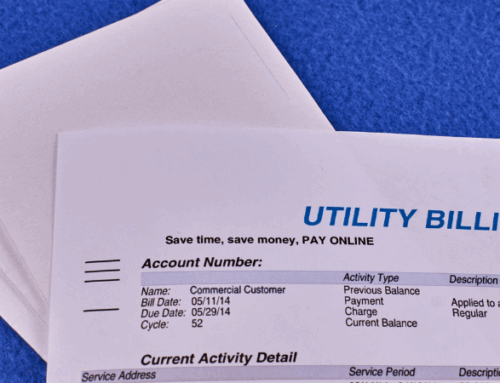In today’s energy market, ancillary services are key to keeping the electric grid stable and reliable. For commercial businesses in retail energy contracts, it’s important to know how these wholesale electricity market services impact costs and energy rates. This article will cover what ancillary services are, why they’re important for the overall energy grid, how they work, and what it means for businesses in different regions.
What are Ancillary Services In The Energy Industry?
Ancillary services in the energy industry are designed to be essential functions that keep the grid running. Managed by Regional Transmission Organizations (RTOs) and Independent System Operators (ISOs), these services provide backup power, voltage support, and system stability to balance supply and demand fluctuations. Retail energy suppliers factor ancillary services into the total cost paid by energy customers, as they are responsible for paying for these service costs back to the grid operator.
Ancillary services help with grid stability in several ways. Here is an overview of the different types of ancillary services in energy markets:
- Load Regulation: Balancing real-time changes in demand and supply.
- Operating Reserves: Providing back up power for unexpected demand shifts.
- Voltage Support: Keeping voltage levels stable across the electric transmission system.
- Black Start Capability: Restarting the grid after a major outage.
Commercial businesses, especially large industrial energy users, may see these charges on their retail energy bills, especially if they are on a hybrid energy product such as a block + index plan. Understanding how these charges work is key to businesses looking to manage and reduce energy expenses.
Why Are Ancillary Services Important?
Ancillary services keep the grid stable and reliable so the electrical system can run uninterrupted even during peak demand or unexpected events. As demand grows, ancillary services are critical to help transmission system operators manage power flow, prevent blackouts, and ensure system resilience. For commercial customers, grid support from ancillary services means less disruption and lower costs from unplanned outages or equipment damage from unstable power.
For retail energy providers, these services are necessary expenses that keep the grid intact, especially as the industry is undergoing changes from renewable energy integration and grid modernization. For example, the shift to more renewable energy sources means more ancillary services are needed due to the variable nature of sources like wind and solar.
How do Ancillary Services Work?
Ancillary services keep power on the grid balanced in real-time, so supply and demand fluctuations are managed smoothly. RTOs and ISOs like PJM, NYISO, MISO and ERCOT manage ancillary services across the grid. These operators forecast energy demand and assign ancillary services to prevent disruptions in the power transmission grid which includes generation sites and end users. Ancillary services market participants, such as electricity generators and battery storage owners, bid in the day-ahead ancillary services markets. They are compensated for their willingness to be on standby and for participating in grid stabilization.
Here’s a quick look at how some of the core ancillary services work:
Regulation Services
These services manage short term frequency changes to keep the grid stable. Generation assets that provide regulation services ramp up or down as needed to match demand. A battery storage system, for example, might charge or discharge in real-time in order to help maintain grid frequency.
Spinning and Non-Spinning Reserves
Spinning reserves are assets that are online and ready to perform in the current moment. These typically represent power plants and other generating assets that are performing in the market. Non-spinning reserves, on the other hand, are offline but can be brought online in minutes. An example of a non-spin reserve would be a battery system that has ample state-of-charge ready to deploy.
Replacement Reserves
When extra power is needed, replacement reserves provide a steady supply for hours. Replacement reserves are backup generators that are able to turn on at any given time in order to provide additional power supply to the market.
Voltage Support and Black Start Services
Voltage support keeps voltage levels optimal and black start is for restarting the grid after an outage.
Each ISO and RTO market has its own version of these services with requirements specific to the region. Let’s explore the different ancillary services markets in each electrical system.
Ancillary Services By RTO/ISO
Ancillary service markets vary by region, based on the specific needs and infrastructure of each RTO/ISO. Here’s a look at how ancillary services are managed in some of the major U.S. energy markets:
PJM
- Regulation Market: Frequency stability.
- Spinning and Non-Spinning Reserves: Quick response power during an outage.
- Black Start Services: Grid recovery after a major outage.
ISO New England (ISO-NE)
- Regulation and Reserves: Supply-demand balancing.
- Voltage Support: High demand.
- Black Start: Grid restart capabilities in emergencies.
NYISO
- Operating Reserves: Spinning and supplemental.
- Voltage Support and Black Start: Voltage stability and system restoration.
ERCOT
- Regulation Up/Down: Frequency changes.
- Responsive Reserve Service (RRS): Emergency response power.
- Non-Spinning Reserves: Offline power in 30 minutes.
CAISO
- Regulation Up/Down: System frequency.
- Spinning and Non-Spinning Reserves: Grid balance services.
- Voltage Support: Voltage management for a stable grid.
Each of these RTOs and ISOs has created their own ancillary service markets to meet the needs of their region for a balanced and reliable supply of electricity.
Renewable Energy and Ancillary Services
As renewable energy trends continue and wind and solar becomes more prevalent, ancillary services are key to managing their variability. Conventional generation doesn’t vary with the weather; however, renewable energy generation does. Solar systems produce when the sun is shining, and wind turbines only work when there is sufficient wind. Renewable assets need ancillary services for stability. For example, renewable assets need voltage support and frequency regulation to handle sudden changes in output due to cloud cover or changes in wind speed.
Battery storage systems are entering the ancillary service markets to support renewable integration. Storage allows energy to be stored when generation is high and released during peak demand, balancing the grid and reducing reliance on fossil fuels. This supports the value of renewable assets and grid stability, making it easier to add renewables to the transmission grid.
The Bottom Line
Ancillary services are key to grid reliability in a complex and changing energy world. For commercial energy customers, understanding these services and how they impact retail energy contracts is critical to energy cost management. With the right knowledge and support, businesses can manage these costs better, often with the help of an energy broker or consultant. If you need help understanding how ancillary services are impacting your electricity supply contract, contact our team of energy market experts today. We have decades of combined experience working with retail electric providers to help our customers negotiate the best energy supply terms.



